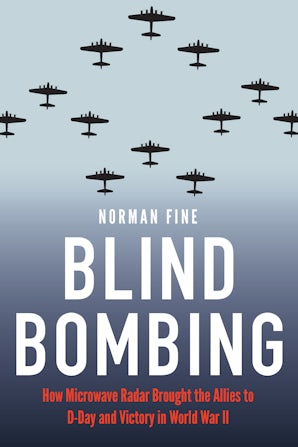"A riveting addition to the literature on scientific innovation during the Second World War."—Kirkus
"If you have an interest in the role technology played in helping determine the outcome of WWII this book should be high on your list. Well written, well documented with footnotes and bibliography."—Hayden Hamilton, AAHS Flightline
"The story of how Britain developed a device that can fit in the palm of a hand, and how the Americans rallied to design new radars to exploit it is told in Blind Bombing. . . . The book brings to life the scientists, military, and political leaders who made this happen, as well as the technology they developed."—David Hughes, Journal of Air Traffic Control
“Reading like a detective story, Norman Fine’s spellbinding narrative reveals the little-known story of how British and American scientists developed a new radar system critically important to victory over Germany in World War II.”—Nick Kotz, Pulitzer Prize–winning reporter and author of Wild Blue Yonder: Money, Politics, and the B-1 Bomber
“This is an extremely accurate and detailed account of the development and use of microwave radar from its inception to its role in ending World War II in favor of the Allies. The book has both a technical and a personal spin that held my interest throughout.”—Col. Dick Rounseville, U.S. Army (Ret.), commander, 334 Attack Helicopter Company (Cobra)
“Norman Fine’s well-crafted account of the development and implementation of microwave radar is a valuable addition to the backstory of the Allied victory in World War II. Fine also has a personal stake in the story: his uncle Stanley was one of the quiet heroes who risked everything to bring the new radar to the skies over Europe. A deeply satisfying read on multiple levels.”—Howard Means, author of 67 Shots: Kent State and the End of American Innocence
